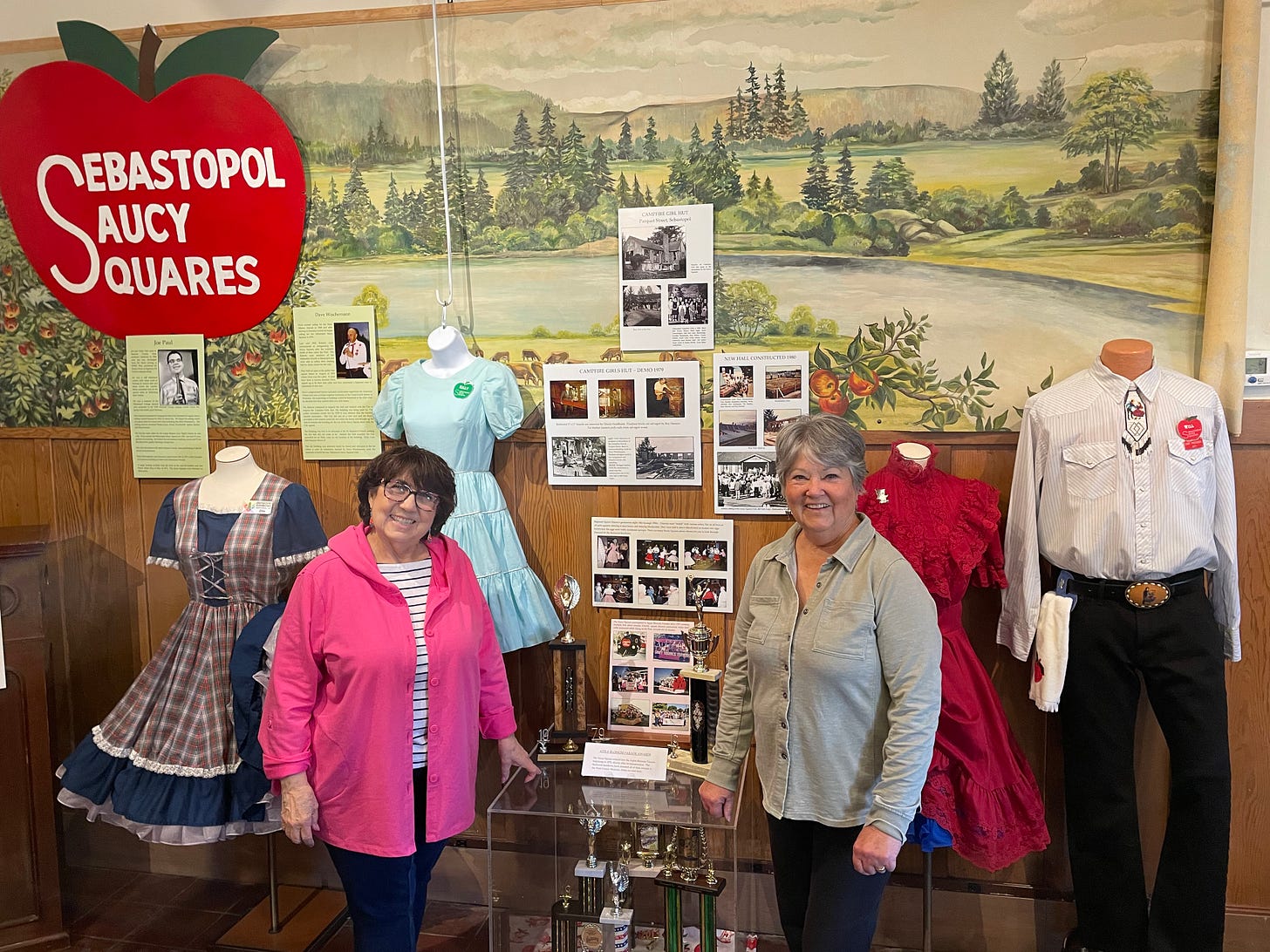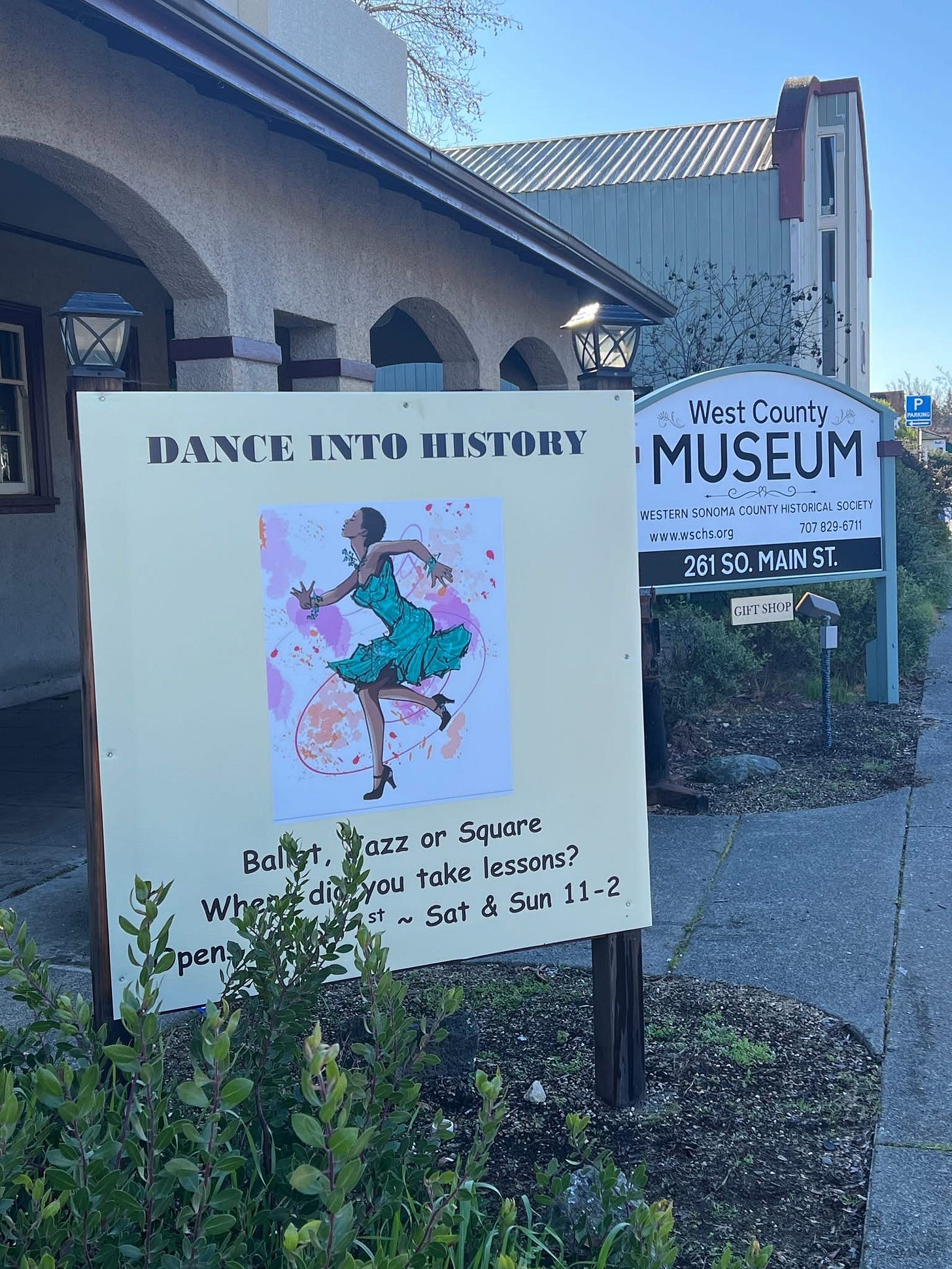Dance into History
A new exhibit at the West County Museum explores the history of dance in Sebastopol

The West County Museum has a new exhibit opening this weekend on the history of dance in Sebastopol.
A few months back, the Redwood Rainbows—the LGBTQ+ dance group that operates out of Wischemann Hall—gave the folks at the West County Museum a collection of the Sebastopol Saucy Squares memorabilia—10 or 12 large photo albums with clippings and flyers. The Sebastopol Saucy Squares, founded in 1962, was the square dance group that built Wischemann Hall in the early eighties.
“We thought, ‘This would be a really cool idea. Let’s just do an exhibit around it,’” said volunteer curator Mary Dodgion.
For Dodgion, it was a nostalgic moment. Her father, Joe Paul, had been the caller for the Saucy Squares before his death in a boating accident in 1971. (In square dancing, a caller is the person who announces the dance steps.)
Dodgion expanded her focus to include all of the dancing schools and clubs in Sebastopol over the years, including The Redwood Rainbows, Robin’s School of Dance (1952-1973) and Karen Campbell’s Ballet School (1973-1993), which was the precursor of the Sebastopol Ballet. In addition to dance costumes from the last several decades, the exhibit will also include dance videos. West County Museum Director Donna Pittman said they are hoping to include some Pomo dance videos as well.

Part of the exhibit traces the building of Wischemann Hall, Sebastopol’s only dance hall. The hall is named after Dave Wischemann, the caller that got the Saucy Squares back on their feet a few years after the lull that followed Paul’s death.
The hall itself started life as a girl scout camp building on Parquet Street. The city was about to demolish it but gave it instead to the Saucy Squares.
“They went in, and they tore everything apart, bricks and all,” Dodgion said. “That was in 1979, they dismantled it. In 1980, they reconstructed it on city property on Morris Street.”
“The building was actually called Saucy Squares Hall,” she said. “And then, when they had the dedication, they decided to dedicate it as Wischemann’s Hall,” because of Wischemann’s involvement in its reconstruction.
“This is how it used to be in town, right?” Pittman said. “People just got together and said, ‘We’ve got to fix this and then they got it done.’”
In the mid-eighties, a new caller, Steven Minkin, came on the scene. He called for the Saucy Squares for several years, but by the ’90s, traditional square dancing was on the wane. Then Minkin had the idea of opening up the club to the LGBTQ+ community, where line dancing of all sorts was making a comeback.
“In the early nineties, he went to the board of the Saucy Squares, and they allowed him on Monday nights to bring in beginners in the gay and lesbian groups. He publicized it, and it was a great turnout. And eventually the Saucy Squares gave him rights to the business,” Dodgion said.
Minkin and other dancers worked to start an LGBTQ+ and straight-welcoming club, called Redwood Rainbows, which now has well over 100 members.
The museum, which is open Saturdays and Sundays from 11 am to 2 pm, is having an opening reception for the exhibit on Saturday, March 1, at 11 am.



I really enjoyed the article of the Dance History exhibit. We are a 501c3 Nonprofit, ChromaDiverse, that specializes in helping Dance Organizations preserve, protect and amplify their legacies. We are actually based in Sebastopol. Would be great to meet with the folks behind the archival effort to see if we can help in any way. Check us out at https://chromadiverse.org